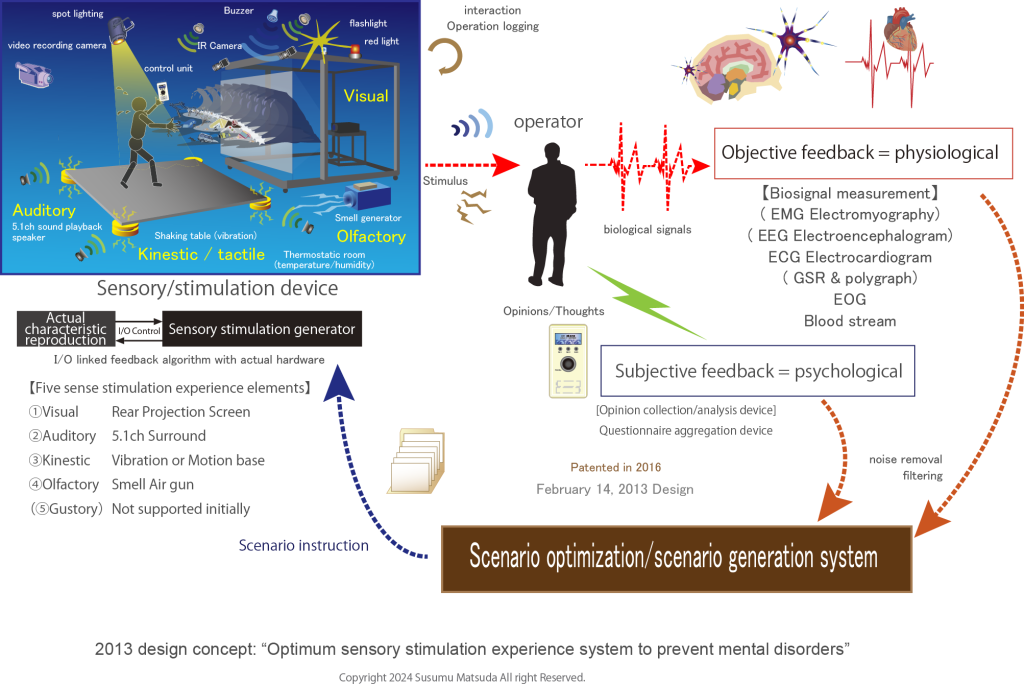When experiencing a disaster using VR to recreate the five senses, it is important to create an experience that takes into account the risk of mental disorders, depending on the content of the event being reproduced and the physical stimulation. It is known that danger sensitivity differs from person to person, so it is important to tailor the experience to each person’s characteristics. It is necessary to evaluate the characteristics of the person in advance and adjust the stimulation during the experience. It is also necessary to implement a function to cancel the experience caused by forced stop. In 2013, we considered the need to create an experience system that takes these factors into consideration.

When experiencing a disaster, we use VR (visual) together to provide stimulation to people through the five senses (hearing, touch, balance, smell, and skin sensation). Subjective feedback on the sensations experienced through questionnaires, etc. is returned to the system and recorded. At the same time, objective evaluation feedback that captures biological signals during the experience is combined and recorded back into the system. Using these two systems of evaluation functions, we devised a system that evaluates how people feel during the experience and inputs it into the system, while at the same time changing and optimizing the stimulation during the experience. We already have a mechanism in place to adjust the intensity of danger stimulation in five levels when experiencing a disaster scenario. Although the mechanism for evaluating emotions is still under research and development, the function for optimizing the intensity of sensory stimulation using emotional evaluation feedback was patented in 2016.